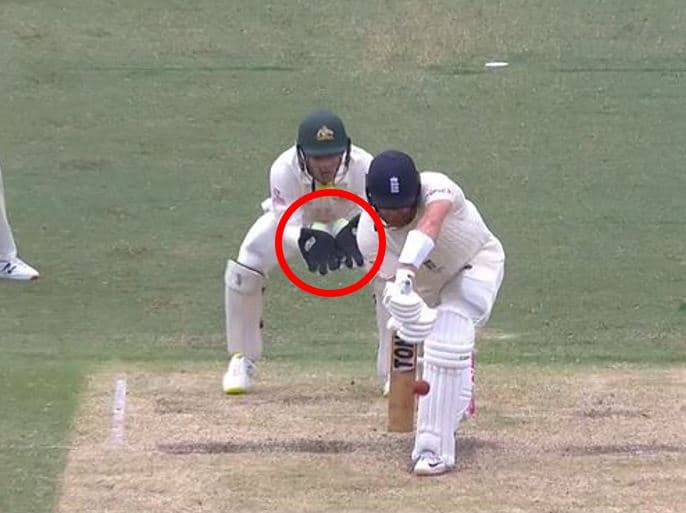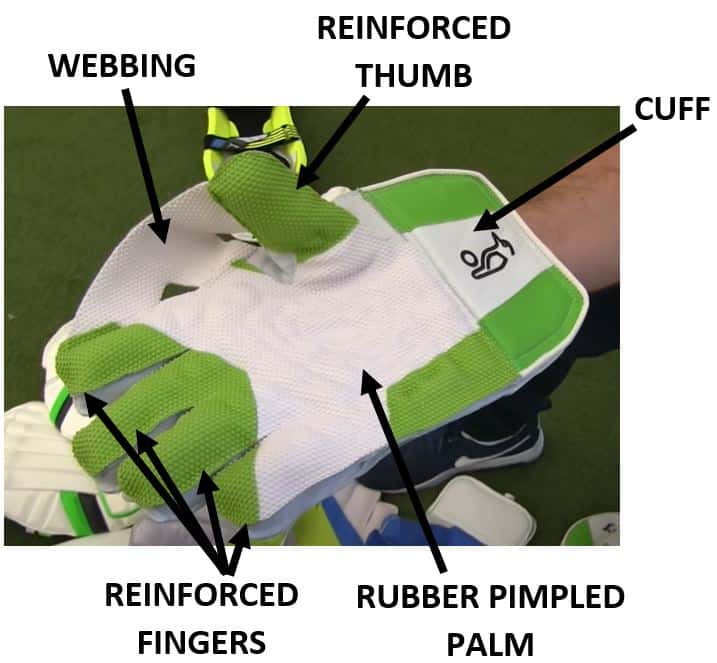Cricket is an interesting sport. When batting, it is largely an individual game, where a single batsman can turn a match with a heroic solo effort. However, when a cricket team is in the field, all eleven players are in it together. Bowling out a batting side is a collective effort, and all bowlers and fielders will have to contribute to this task.
Although the bowling side has 11 players who can field the ball, only one individual – the wicket-keeper – is allowed to wear a pair of gloves. A lot of viewers of the sport are left wondering why this is the case! Both the normal fielders and the wicket-keeper are both required to catch and handle the ball, so why is only one of them permitted to wear gloves? If you want to know the answer to this, as well as some other keeping glove related questions, then I’ll be aiming to answer them for you today.
So, why do wicket-keepers wear gloves?
Wicket-keepers wear gloves to protect the palms of their hands, and more importantly, their fingers from the often painful impact of the cricket ball. When keeping, it’s very easy to end up taking a ball on the end of the fingers or the thumb, so the gloves provide a layer of protection to lessen the blow a little.
At this point some of you may still be a little confused – because normal fielders have to catch the ball too. So why aren’t they given the opportunity to wear gloves for protection like wicket-keepers are? The difference is that wicket-keepers are asked to catch the ball a lot more frequently than normal fielders, and as a result their hands take more of a beating. A wicket-keeper that is in the field for 200 overs (1200 balls) in a test match could end up having to take more than half of these deliveries in their gloves. So that would be in excess of 600 balls they could have to catch! Other fielders don’t catch the ball anywhere near this amount of times, so there isn’t as much need for them to have protection. Some fielders may go for hours without touching the ball, whereas a wicket-keeper will usually touch the ball at least a couple of times in an over.

Additionally, when a keeper does touch the ball, it will often be travelling through to them pretty quickly after being delivered by a fast bowler, or after being thrown towards them from the boundary. The faster the ball is travelling, the more painful the impact of the ball could potentially be – therefore the gloves are vital. When normal fielders touch the ball, it will often have hit the bat first or rolled along the floor, which takes a lot of the pace off it. A normal fielder may only have to field a maximum of a couple of balls a day that have been hammered in their direction, which means their hands and fingers should be fine without gloves.
Obviously, injuries to normal fielders from gathering or catching the ball can still occur, and I would guess that these are most likely to occur when a fielder is standing in the slips (click here if you’re not sure where that is). If you’re a slip fielder, the ball can fly towards you at high speeds! However, it’s unlikely to happen too often, so once again it isn’t really deemed necessary that slip fielders require gloves.
What Do Wicket Keepers Gloves Look Like?
Wicket-keeping gloves come in a range of shapes and sizes and can be tailored to a keeper’s individual preferences. Having said that, there are some common features that unite all of them! You can see an example of a typical wicket-keeping glove in the picture below.

One of the main features of the gloves is the way the palm is designed. Most gloves have a rubberised, padded palm with lots of bobbles/pimples on them as is shown in the photo above. Each brand of glove will have different palm designs and patterns, so this is something you can select based on your own preferences. This rubberised palm helps protect the hand, but also helps the keeper to grip and hold the ball, especially in slightly more damp conditions. They also have webbing in between the thumb and the index finger, which stops the ball sliding through that gap and gives the glove a bit more surface area in which the ball can be caught. Webbing is not allowed between any of the other fingers.
Each finger of the glove has a reinforced protective area going towards the tip of the finger, which helps to protect the keeper against those nasty impacts on the ends of the fingers that I mentioned earlier. This doesn’t mean that taking a ball on the end of the finger won’t hurt, but it does mean that it won’t hurt as much as if you weren’t wearing a glove!
The last main common feature is the cuff area of the glove, which sits across the keeper’s wrist and forearm. This helps to protect the keeper if they misjudge the ball and it ends up flying into the forearm or the wrist, and each brand has a different level of padding in this area. Some keepers prefer the cuff part of the glove to be nice and thin with minimal padding, and some prefer it a lot thicker with plenty of protection.
Do Wicket-Keepers Have To Wear Gloves?
If you’re a wicket-keeper, technically you don’t have to wear a pair of gloves. However, I think that choosing not to wear them would be a pretty foolish move, especially if you’re playing cricket with a proper cricket ball. To put it simply, no one wants to have their fingers broken. Trust me, it’s not a pleasant experience! So if you’re a keeper and want to avoid this, make sure you wear gloves when keeping. You’ll be way more likely to get injured if you don’t. And if you do have a nasty finger/hand injury this can take a long time to recover from! You’ll have to miss a lot of cricket in the meantime.
If you’re a younger keeper, or you just play cricket with a tennis ball or a rubber ball, then wearing gloves isn’t as vital for you. The lightweight balls are much less likely to do damage to your hands, and as a result you can probably get away with not wearing them. Having said that, if you’re a young keeper that is planning on moving towards using a hard ball soon, getting comfortable with wearing a pair of wicket-keeping gloves is always a good idea, and I’d recommend wearing them as soon as possible so that you can get used to the feel of catching the ball.
Conclusion
I hope this post has helped answer any queries you had regarding wicket-keeping gloves. If you’re a wicket-keeper yourself, make sure you stay tuned to the site as I’m planning to post more technical wicket-keeping tips soon. In the meantime, why don’t you have a look at some of my batting tips so you can brush up on another area of your game? Enjoy!
